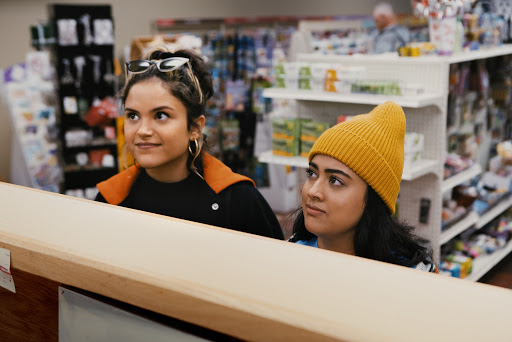Plan B depicts the struggle of two students to find emergency contraception, an all-too-familiar story—but groups like Emergency Contraception 4 Every Campus are working to change that.

Plan B, directed by Natalie Morales and recently released on Hulu, follows Sunny and Lupe, two South Dakota high schoolers, on their quest to find emergency contraception (EC). The film portrays a high school simultaneously obsessed with and terrified of sex—quickly switching between conversations about sexual positions in the locker room and outdated videos in sex ed class. After Sunny finds herself with a broken condom after her first sexual experience, she knows the Plan B pill is the right choice for her and sets off to find it.
Unfortunately, it’s much harder than it should be to obtain Plan B, also known as emergency contraception or the morning-after pill. Despite Plan B being authorized by the FDA in 2013 for over-the-counter sales to anyone regardless of age and without a prescription, roadblocks have been put in place to restrict access. On her first stop at her local pharmacy, Sunny encounters the “conscience clause,” when her pharmacist refuses to sell her the pill because of his personal beliefs. This is a real law in South Dakota—and similar laws around contraception exist in 12 other states.
The pill is also expensive, retailing around $50, a fee insurmountable for some, especially as the pill is most effective if taken as soon as possible and must be taken in the first five days after sex. Some stores hold Plan B behind the counter, requiring people to approach a pharmacist and ask for access, which is challenging for people with anxiety or those who want a more discreet transaction. At colleges and universities, not all health centers offer contraception; others that do offer the pill may be closed on nights and weekends.
The journey of Sunny and Lupe—crossing state lines in search of EC, being refused by pharmacists, and struggling to access basic health care—isn’t far from reality. There are many obstacles in place keeping emergency contraception from the people who need it, but programs such as Emergency Contraception 4 Every Campus (EC4EC) want to change this narrative. EC4EC focuses on supporting college students and activists to increase the accessibility of EC on their campuses.
“We realized that there was a demand for better access to EC, and there was a demand for students to be able to find ways to help each other get EC,” said Kelly Cleland, executive director of the American Society for Emergency Contraception and a coordinator for EC4EC. “I’m so proud of the young people who are involved in this movement, because I see the passion they have for helping to take care of their fellow students when they are in need.”
EC4EC supports different forms of distribution, including emergency contraceptive vending machines and peer-to-peer distribution models. “Our goal for EC4EC is really to empower student activists to help make EC access the best that it can be on their campus given local conditions,” said Cleland.
EC vending machines, for example—in place at Harvard, Stanford and U.C. Davis—work best when the administration is willing to work with students on the implementation.
Peer-to-peer distribution may be a better fit for more conservative campuses that do not permit the sale of contraceptives. For example, H*yas for Choice, a pro-abortion advocacy group on Georgetown’s campus, offers the morning-after pill, condoms and other sexual health materials for students—despite receiving no support, recognition or funding from the university.

Student activists take the lead on these projects. “We give them the tools, and we help them when they have questions. But it is really a project guided by themselves because they’re on the campus and they know what their administration will approve and what their student body is interested in,” said Nicola Brogan, project manager for EC4EC. (Students interested in expanding emergency contraception access on their campus can contact EC4EC to receive resources, mentoring and a toolkit to help them get started.)
EC4EC also strives to educate people about emergency contraceptives, emphasizing how time-sensitive access is as well as how the contraceptive is different from the abortion pill. “It’s really important to try to break that stigma around needing to take emergency contraception after intercourse,” said Brogan, “and understanding that by empowering young people to access the product, you are, in fact, giving them a better shot at life… they can go on to graduate, get a job and family plan the way that they want.”
The story of Sunny and Lupe is far too realistic, but it doesn’t have to be—with more access and education, emergency contraception can get into the hands of those who need it.
Up next:





